Are voles running amok in your yard, filling it with holes, tunnels, and dirt mounds? Perhaps they’re consuming more of your garden vegetables than you are? Voles can cause extensive damage to lawns, gardens, and even kill trees by gnawing on their roots and bark. This comprehensive guide will help you identify, prevent, and how to get rid of voles using effective and proven methods, so you can reclaim your outdoor spaces and keep them vole-free.
Quick Picks: How to Get Rid of Voles
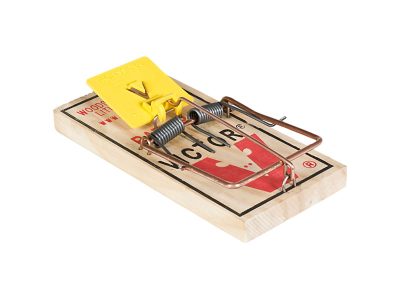
Editor’s Choice
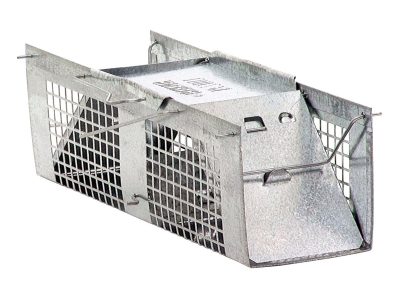
Humane Option
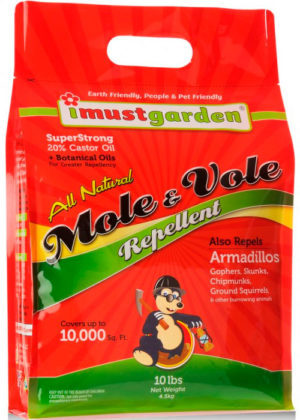
Natural Solution
- What Are Voles?
- Mole Tunnels vs. Vole Tunnels: How to Identify
- What Kind of Damage Can Voles Cause?
- 5-Step Guide on How to Get Rid of Voles in Your Yard
- Protecting Special Areas from Voles
- Long-Term Vole Prevention Strategies
- When to Call Professional Vole Control Services
- Frequently Asked Questions
- Conclusion: Winning the Battle Against Voles
What Are Voles?
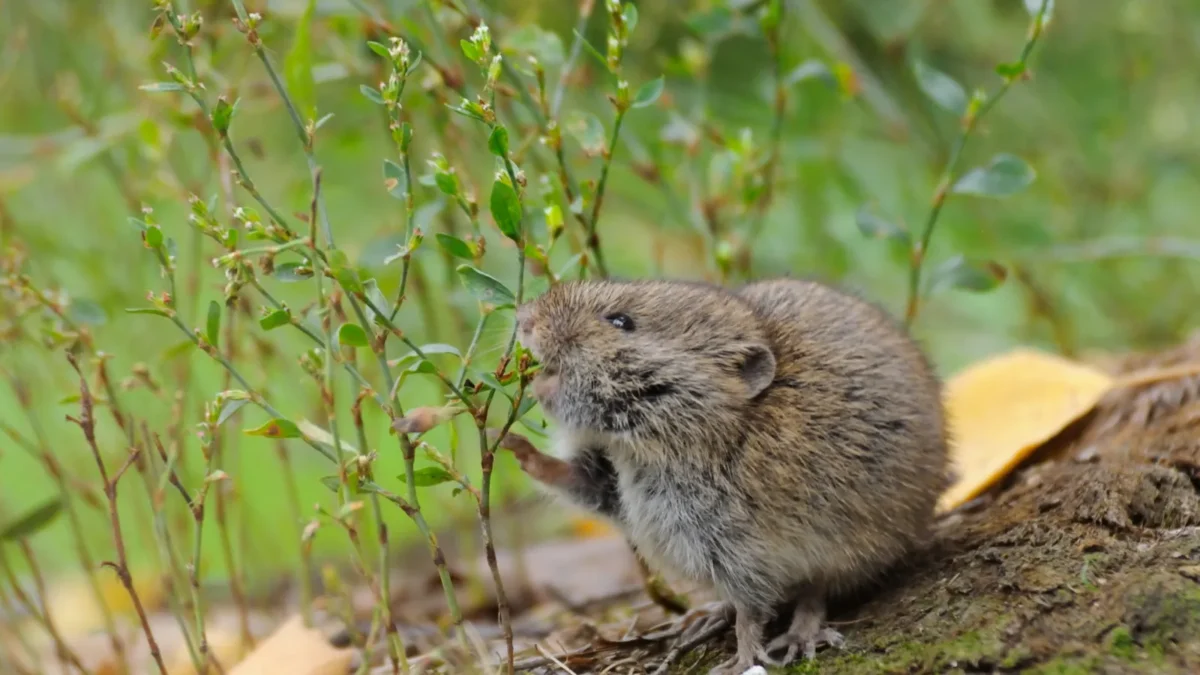
Voles are small rodents that resemble field mice. Often mistaken for mice or moles, voles have distinctive features that set them apart.
Appearance: Voles have shorter bodies (4-8 inches long), stocky builds, small eyes, partially hidden ears, and short, furry tails. Their fur is typically light brown to gray.
Diet: Primarily herbivores, voles feed on plant roots, bulbs, tree bark, grass, and vegetables. They can consume their body weight in food daily.
Habitat: Voles prefer areas with dense vegetation and create elaborate tunnel systems both above and below ground.
Reproduction: Extremely prolific breeders, a female vole can produce up to 100 offspring annually, with new litters every 3-4 weeks.
Mole Tunnels vs. Vole Tunnels: How to Identify

It’s crucial to correctly identify whether you’re dealing with moles or voles, as their control methods differ. Here are the key differences:
| Feature | Mole Tunnels | Vole Tunnels |
|---|---|---|
| Surface Signs | Conical soil mounds (molehills) | No soil heaps; clear runways in grass |
| Tunnel Depth | Deeper underground | Closer to the surface; soil feels tightly packed |
| Tunnel Size | Larger, about 2+ inches in diameter | Smaller, 1-2 inches in diameter |
| Tunnel Pattern | Meandering, random patterns | Direct routes between holes |
| Tunnel Purpose | Used for living, breeding, and hunting | Primarily for feeding and traveling |
| Exit Holes | Few or no exit holes | Multiple golf ball-sized exit holes |
What Kind of Damage Can Voles Cause?
Voles may be small, but they can cause significant damage to your property:
- Create intricate tunnel systems throughout lawns, leaving unsightly runways and weak, spongy soil
- Gnaw on roots and bark of trees and shrubs, potentially killing them
- Devour bulbs, vegetables, fruits, and ornamental plants
- Cause structural weakening of soil that can lead to twisted ankles or lawn equipment damage
- Create entry points that potentially violate HOA regulations and aesthetics
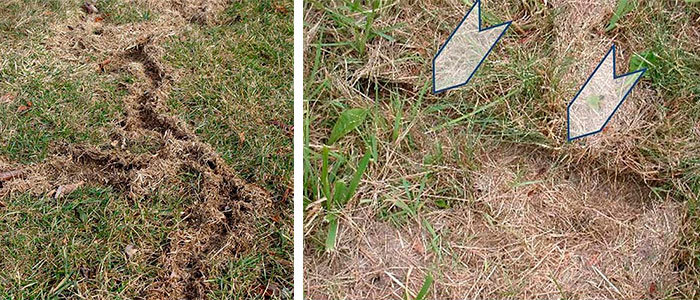
Vole runways in lawn
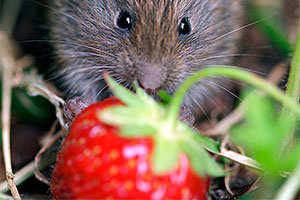
Vole damage to fruits
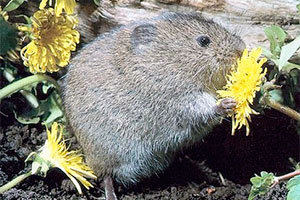
Vole damage to garden plants
Besides ruining your yard, voles also (like other rodents) can carry diseases such as salmonella and host fleas or ticks that may transmit Lyme disease or Rocky Mountain Spotted Fever. This makes vole control important for both property protection and health concerns.
5-Step Guide on How to Get Rid of Voles in Your Yard
Follow this comprehensive approach to eliminate voles from your property:
STEP 1: Find out what is attracting them to your yard
Voles thrive in areas with dense vegetation and plentiful food sources. Identifying what’s drawing them to your property is the first step in effective vole control.
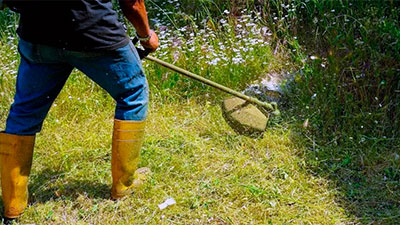
STEP 2: Remove their food sources
Limiting access to food will encourage voles to seek greener pastures elsewhere.
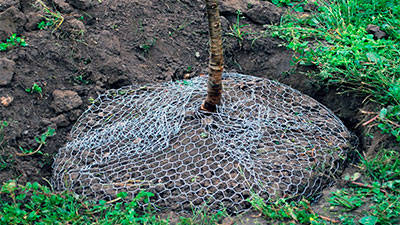
- Protect valuable plants by enclosing them in steel mesh or hardware cloth, extending 6-10 inches below ground
- Apply hot sauce or castor oil to plants as natural deterrents
- Remove fallen fruits, vegetables, and seeds that might attract voles
- Keep bird feeding areas clean as scattered seeds attract voles
STEP 3: Remove their nests and tunnels
Eliminating vole habitats makes your yard inhospitable to these pests.
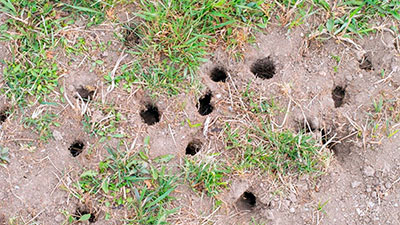
Look for vole nests in these locations:
- Around tall grasses and shrubs along the perimeter of your property
- Near the foundation of your home, deck, porch, or shed
- Under wooden decks and porches not insulated from the soil
- In abandoned mole tunnels or around tree roots
Once you’ve located their nests and tunnels:
- Expose tunnels by digging and flush with water from a garden hose
- Fill burrows with gravel or a mixture of vinegar and water
- Pour boiling water into vole burrows (use with caution)
- Create an inhospitable environment by encouraging natural predators like cats, owls, and hawks
STEP 4: Set up traps
Trapping is one of the most effective methods for controlling vole populations, especially for smaller infestations.
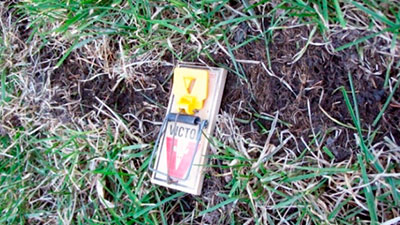
Snap Traps
Standard mouse snap traps work effectively for voles when placed properly:
- Place traps perpendicular to vole runways with the trigger on the path
- Set multiple traps at 10-foot intervals along active runways
- Cover traps to protect children, pets, and beneficial wildlife
- Bait with peanut butter, apple slices, or oatmeal (though bait isn’t always necessary)
- Check traps daily and reset as needed
Victor Snap Trap
Editor's ChoiceHow Does It Work
How to Use
- Place traps perpendicular to visible vole runways with the trigger directly on the path
- Set multiple traps at 10-foot intervals along active runways
- Check traps daily and dispose of any caught voles promptly
- Replace or clean traps regularly for maximum effectiveness
- Consider covering traps to protect non-target animals
- Inexpensive and cost-effective for large vole populations
- Easy to set and use
- Provides quick results
- Reusable for multiple catches
- No chemicals or poisons required
- Requires regular checking and emptying
- May catch non-target animals if not placed carefully
- Not suitable for those uncomfortable with lethal control methods
- Requires proper disposal of dead voles
Cage Traps
Live traps provide a humane alternative for those who prefer not to kill voles:
- Place under low shrubs or near active vole areas
- Bait with peanut butter, apple slices, or seeds
- Check frequently (every few hours) to prevent stress to trapped animals
- Release captured voles at least 5 miles away from your property
- Check local regulations before relocating voles
Havahart Cage Trap
Humane OptionHow Does It Work
How to Use
- Place the trap parallel to active vole runways or near burrow entrances
- Bait with peanut butter, apple slices, or seeds
- Check traps frequently (every few hours) to minimize stress to captured animals
- Release captured voles at least 5 miles away from your property
- Check local regulations regarding wildlife relocation before use
- Humane option for those who prefer not to kill voles
- Durable construction for repeated use
- Can catch multiple voles with one trap
- No chemicals or poisons required
- Safe around pets and children
- Requires frequent checking
- Relocation may be restricted by local regulations
- More expensive than snap traps
- Less effective for large infestations
- Relocated voles may return if not taken far enough away
STEP 5: Use repellents
Repellents can help drive voles away from your property and discourage them from returning.
Commercial Repellents
I Must Garden Mole & Vole Repellent
Natural SolutionHow Does It Work
How to Use
- For granular form: Spread evenly over the affected area at a rate of 1 pound per 1,000 square feet
- For liquid concentrate: Connect to garden hose and spray evenly over affected areas
- Water thoroughly after application to help the repellent penetrate the soil
- Reapply every 30-90 days or after heavy rainfall
- Apply preventatively in early spring and fall for best results
- Natural ingredients safe for use around children and pets
- No harsh chemicals or poisons
- Pleasant cinnamon/clove scent for humans
- Won't harm plants or lawns
- Effective for preventative and active infestations
- Requires regular reapplication, especially after rain
- More expensive than some chemical alternatives
- May take longer to see results compared to traps
- Less effective for severe infestations without additional control methods
Homemade Natural Repellents
You can create effective vole repellents using common household ingredients:
Peppermint Oil Repellent
You will need:
- 10 drops of peppermint oil
- A cup of water
DirectionsMix ingredients in a spray bottle. Shake well before use. Spray on plants or any area of your yard where voles are active. Reapply after rain.
- Castor Oil Mixture: Mix 1/2 cup of castor oil with 1 gallon of water and a tablespoon of dish soap. Spray this solution around your garden every 2 weeks.
- Hot Pepper Spray: Mix garlic powder, cayenne pepper, and paprika in 1/2 cup of hot sauce. Transfer to a spray bottle and apply twice weekly around your garden.
- Coffee Grounds: Sprinkle used coffee grounds around plants and vole burrows. The strong smell repels voles as it resembles predator scent.
- Predator Urine: Purchase fox or coyote urine granules and sprinkle around your garden to mimic the presence of natural predators.
Natural Vole-Repelling Plants
Incorporate these plants into your landscape to naturally deter voles:
- Garlic
- Onion
- Daffodils
- Fritillaria
- Alliums
- Mint
- Thyme
Protecting Special Areas from Voles

Keeping Voles Out of the Vegetable Garden
Vegetable gardens are particularly attractive to voles due to the abundance of food. Here’s how to protect them:
- Install hardware cloth or metal mesh around the entire garden, extending at least 12 inches above ground and 6-10 inches below ground
- Plant vegetables in raised beds with hardware cloth lining the bottom
- Use containers with bottoms cut out for planting particularly vulnerable crops
- Add gravel or sharp stones around the base of plants to discourage burrowing
- Interplant vegetables with vole-repelling plants like garlic, onions, and mint
- Regularly till the soil to disrupt vole tunnels and nests
Protecting Trees and Shrubs
Trees and shrubs can be severely damaged or killed by voles gnawing on their bark and roots:
- Wrap the base of trees with hardware cloth or metal mesh, extending 18-24 inches high and 3-6 inches below ground
- Ensure the tree guard is loose enough to allow for tree growth
- Remove mulch from directly around tree trunks to eliminate hiding places
- Clear snow away from the base of trees during winter months
- Apply vole repellent around the base of trees and shrubs
Protecting Flower Beds and Bulbs
Voles love to feast on flower bulbs and can quickly destroy ornamental plantings:
- Plant bulbs in wire mesh baskets or repurposed plastic strawberry containers
- Add sharp gravel or crushed shells to planting holes to deter burrowing
- Surround flower beds with a buried hardware cloth barrier
- Plant daffodils, fritillaria, and other bulbs voles tend to avoid
- Apply repellents regularly around the perimeter of flower beds
- Avoid thick layers of mulch that provide cover for voles
Voles Under Decks and Structures
Decks, porches, and other structures provide perfect shelter for voles:
- Install hardware cloth along the perimeter of decks, extending 6 inches below ground
- Remove vegetation, debris, and clutter from under and around structures
- Use gravel instead of mulch or soil directly adjacent to foundations
- Set traps along the edges of structures where vole activity is observed
- Apply repellents regularly around the perimeter of buildings
Long-Term Vole Prevention Strategies
Preventing vole infestations is easier and more effective than dealing with established populations:
When to Call Professional Vole Control Services
While many vole problems can be handled with DIY methods, sometimes professional help is warranted:
- You have a severe infestation with extensive damage across your property
- DIY methods have failed to reduce the vole population
- You have a large property that’s difficult to manage on your own
- You’re concerned about the proper and safe use of traps or repellents
- You need a comprehensive solution that includes exclusion, habitat modification, and ongoing monitoring
Professional pest control services can provide targeted treatments, including specialized trapping methods, commercial-grade repellents, and exclusion techniques that may not be available to homeowners. They can also develop a customized plan based on your specific situation and property layout.
Frequently Asked Questions
How can I tell the difference between voles and mice?
Voles have shorter tails, rounder bodies, smaller ears, and partially hidden eyes compared to mice. Voles also primarily live outdoors in burrows and tunnels, while mice often enter homes. Voles are herbivores, while mice are omnivores.
What time of year are voles most active?
Voles are active year-round, but their damage is often most noticeable in late winter and early spring when food sources are scarce and they feed more heavily on tree bark and plant roots. Fall is another period of high activity as they prepare for winter.
Will voles eventually go away on their own?
Voles rarely leave an area on their own unless food sources become extremely scarce or the habitat becomes inhospitable. Given their rapid reproduction rate, untreated vole populations typically increase rather than decrease over time.
Are cats effective at controlling voles?
Yes, cats can be very effective natural predators for voles. Even the presence of a cat’s scent can deter voles from an area. However, cats alone may not be sufficient for controlling large vole populations.
Do ultrasonic repellers work against voles?
There is limited scientific evidence supporting the effectiveness of ultrasonic repellers against voles. While some users report success, voles often become accustomed to the sound over time, especially when food sources are abundant.
How deep do vole tunnels go?
Vole tunnels are typically shallow, often just below the surface of the soil or grass. Their surface runways are about 1-2 inches wide, while their underground tunnels generally extend only a few inches below the surface, rarely going deeper than 12 inches.
Are voles active during the day or night?
Voles are primarily active during dawn and dusk (crepuscular), but they can be active throughout the day and night. They typically have activity cycles of about 4 hours followed by rest periods.
Is it legal to relocate trapped voles?
Regulations regarding wildlife relocation vary by location. In many areas, it is illegal to relocate wildlife without proper permits. Check with your local wildlife agency before relocating any trapped voles.
Conclusion: Winning the Battle Against Voles
Dealing with voles requires a multi-faceted approach combining identification, prevention, and control methods. By understanding vole behavior and implementing the strategies outlined in this guide, you can effectively manage and eliminate vole problems in your yard and garden.
Remember that persistence is key. Voles reproduce rapidly, so consistent application of control methods is essential for long-term success. Combine multiple approaches—habitat modification, barriers, traps, repellents, and encouraging natural predators—for the most effective vole management strategy.
With diligence and the right techniques, you can reclaim your outdoor spaces and enjoy a vole-free yard and garden.
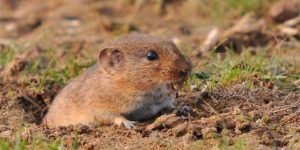

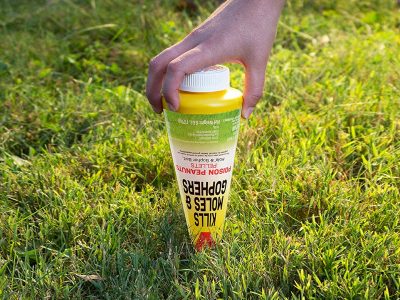

How effective is Uncle Ian’s repellent (dried blood plus red pepper for controlling voles?
Does vinegar work against voles?
I don’t think so. It’s also slightly acidic which will harm any plants you have.